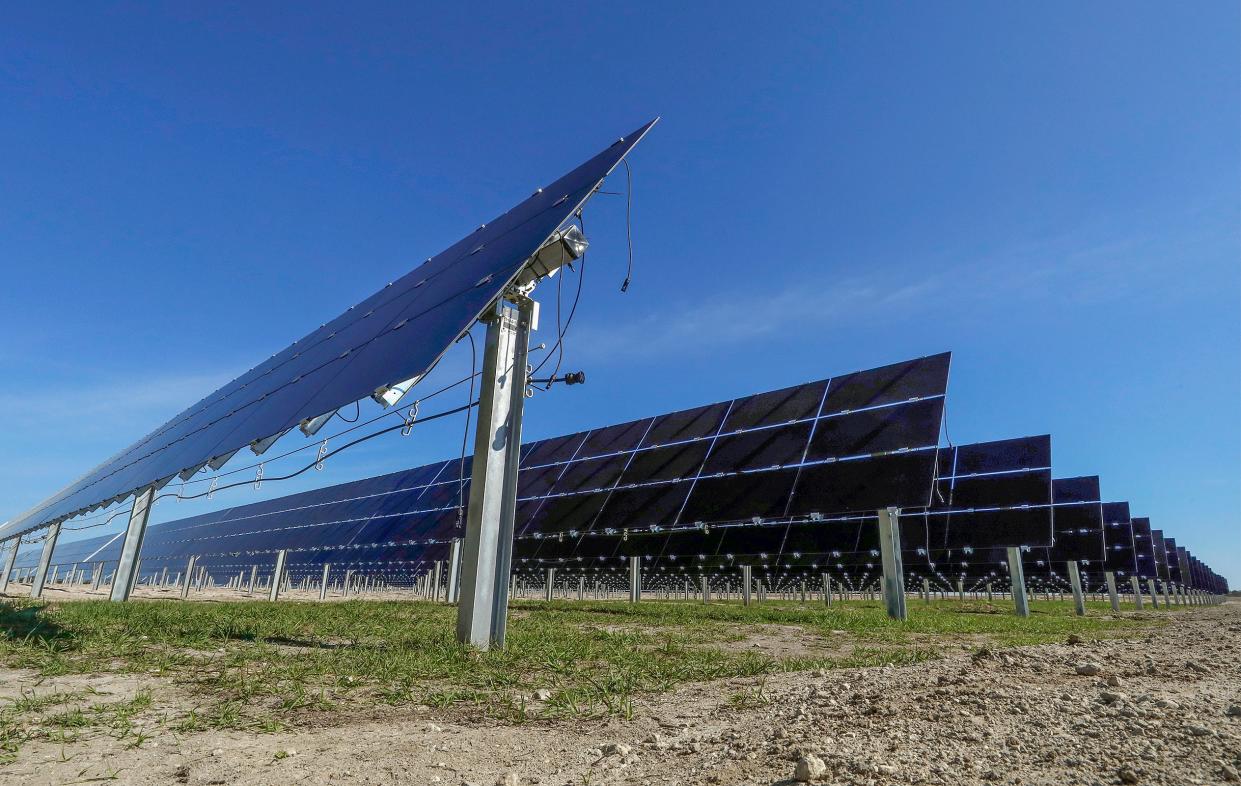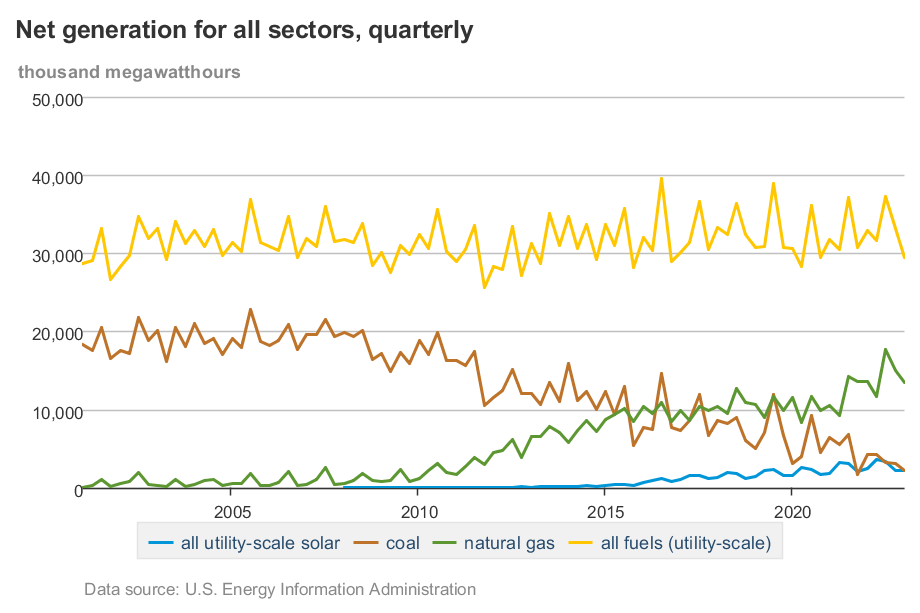With coal losing steam, solar is filling the NC power void. But natural gas is still king.

North Carolina is on pace to generate more of its power from solar than from coal this year, another sign of the state's energy transformation toward a greener future.
But the Tar Heel State still relies heavily on natural gas for energy, more than 40% on average over the past year. While it burns much cleaner than coal, natural gas is still a fossil fuel that releases atmospheric-warming gases, particularly methane, that are the major contributor to climate change.
The question of whether North Carolina should be adding more power plants that are fueled by natural gas instead of relying on renewable energy sources to replace retired coal-fired plants remains one of the biggest battlegrounds between clean energy advocates, Duke Energy and the N.C. Utilities Commission. Under legislation passed in 2021, the state has to develop a carbon plan that reduces emissions from electric-generating facilities by 70% by 2030 and be carbon-neutral by 2050.
Still, the rise of solar in North Carolina is a welcome sign, said Matt Abele, interim executive director of the N.C. Sustainable Energy Association.
“We've seen coal drop from at one point in time being 35% or so of North Carolina's electrical generation now down to 7% or 8%, and solar has grown rapidly in North Carolina from being a very small portion of the electricity mix to roughly 8%," he said. “That trend shows no sign of slowing down anytime soon."
According to the U.S. Energy Information Administration, North Carolina's power generation mix in the first quarter of 2023 was roughly 2.16 gigawatts (GW) from coal, 2.23 GW from solar, 9.4 GW from nuclear, and 13.4 GW from natural gas. Wind provided 171 megawatts, mostly through a single land-based wind farm near Elizabeth City. But three large offshore wind farms are planned to be built off the North Carolina coast later this decade, including two off Brunswick County.
SPARKING DEBATE North Carolina's future energy roadmap rolled out amid criticisms, Christmas blackouts
Solar up, coal down
Abele said the reason for coal's continued demise and solar's rise is pure economics. With coal prices rising and federal regulators adding more and more regulations on smokestack industries, coal simply isn't economically viable when compared to other fuel sources. That's especially true with solar, which has seen development and deployment costs drop by more than 75% since 2010.
"That's made solar the lowest-cost form of energy on the market for utilities, especially when it comes to the price volatility we've seen associated with natural gas in recent years," Abele said.
But many states, including North Carolina, have been pressured by their large utilities to rein in the rapid growth of residential solar installations, claiming that the compensation offered to folks with roof-top solar systems that sell excess power back to the power companies is too high and that solar owners aren't paying their fair share to maintain the grid. In effect, customers without solar are subsidizing those with solar, they argue. Clean power advocates, however, say having more solar reduces the stress on the power grid and the need for expensive new power plants, lowering rates for everyone.
That debate is playing out before the state utilities commission now, with Duke Energy proposing to retire its remaining six coal-fired plants in North Carolina by the mid-2030s and replace much of that power capacity with 2 GW of new natural gas plants. The utility says adding the plants, along with renewables and an expanded nuclear portfolio, would offer a diverse mix of power generation tools that would be efficient, reliable and pragmatic for keeping the lights on at an affordable price.

PRICE OF POWER Duke wants to raise your electricity rate for the next 3 years. Here's how much
But "green" advocates, including the sustainable energy association, said renewables are now more than reliable and offer the cleanest and most affordable way to meet the state's carbon-reduction goals rather than locking in rate payers to support expensive new gas-fired plants for decades to come. They note that the rolling blackouts of Christmas 2022 were caused by problems at Duke's fossil-fueled power plants, not by solar and wind farms freezing up. While the utilities commission issued its first iteration of the carbon plan at the end of last year, state law requires regulators to revisit the plan every two years. That process starts later this month.
Abele said that North Carolina's solar growth is already starting to slow as new state regulations have given more control to Duke over where and how solar is added to the grid. He noted that at one point North Carolina was No. 2 in the nation in solar deployment, but that slipped to No. 4 last year. That ranking could drop to as low as 30th in five years, according to the Solar Energy Industries Association.
"So we've lost some ground as to how quickly we're deploying solar in the state," Abele said. "But renewables are going to continue to play a larger and larger piece of the puzzle, and I think it's hard to envision a grid that reaches 70% reduction by 2030 and carbon-neutral by 2050 without a big role being played by solar and wind."
Reporter Gareth McGrath can be reached at GMcGrath@Gannett.com or @GarethMcGrathSN on Twitter. This story was produced with financial support from 1Earth Fund and the Prentice Foundation. The USA TODAY Network maintains full editorial control of the work.
This article originally appeared on Wilmington StarNews: Solar passes coal as power source in NC but natural gas still king

